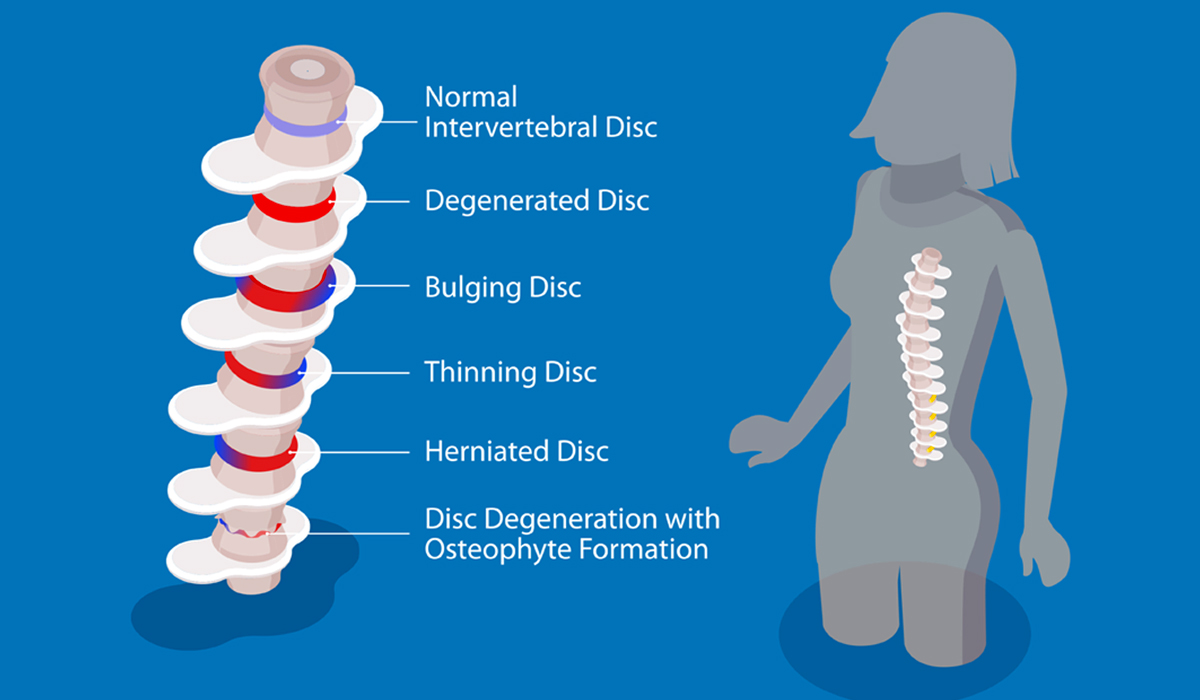

COURTESY PHOTO
Neck and back pain are unfortunate issues that most of us experience at some point in our lives. Our bodies are, after all, flesh and blood, and we often forget how much we put them through on a daily basis. Americans spend over 50 billion dollars every year on pain management, which includes everything from MRIs to pain medications. It’s safe to say that people are trying whatever they can to improve the quality of their lives. But who wants to deal with the pain, baggage, and potential problems that can result from surgery or taking narcotics?
Fortunately, there is another option available. Spinal Decompression Therapy has exploded throughout the chiropractic world over the last decade as more and more chiropractors are implementing the treatment into their services. Why? Because it works. We’ve broken down the top questions and concerns and debunked a few myths so you can familiarize yourself with a new potential option to treat your pain.
What Is Spinal Decompression Therapy?
Spinal Decompression Therapy (SDT) is a method of gently decompressing or stretching the spine. The spine itself is not actually the main focus through this procedure – that is the intervertebral discs. Through stretching, space is created between each vertebrae to relieve pressure and give the intervertebral discs room to correct themselves.
What Are Intervertebral Discs?
Intervertebral discs are gel-like cushions that sit between each vertebrae of the spine. Their purposes are to hold the vertebrae together, absorb shock, and protect the spinal nerves. When these discs are damaged or injured, they can cause severe pain and discomfort. They also can bulge or break off, which puts pressure on the surrounding nerves.

What Can Spinal Decompression Therapy Treat?
Spinal Decompression Therapy can treat:
- Spinal Radiculopathy – A condition due to a compressed nerve in the spine that can cause pain, numbness, tingling, or weakness of the nerve. It is most common in the neck and lower back.
- Myelopathy – A nervous system disorder that affects the spinal cord.
- Claudication – A common symptom of lumbar spinal stenosis which causes inflammation of the nerves emerging from the spinal cord.
- Bulging, Degenerating, or Herniated Discs – A condition where the soft center of a spinal disk pushes through a crack in the tough exterior casing. It can irritate nearby nerves and result in pain, numbness, or weakness in an arm or leg.
- Sciatica – Pain radiating along the sciatic nerve, which runs down one or both legs from the lower back. It primarily occurs when a herniated disk or bone spur in the spine presses on the nerve and usually only affects one side of the body.
- Spinal Stenosis – A narrowing of the spaces within the spine, which can put pressure on the nerves. It occurs most often in the neck and lower back.
What Is the Recovery Time for Spinal Decompression Therapy Surgery?
Spinal Decompression Therapy is non-surgical and non-invasive, so there is no surgery recovery time. As a therapy, SDT takes place over time and is not a solution that can be completed in a single visit.
How Long Does Spinal Decompression Therapy Take?
The length of time and number of visits you’ll need to schedule will be different for each individual based off of your specific circumstances and physical needs. On average, most people need to attend between 15 to 30 separate sessions. Each SDT session usually lasts between 30 to 45 minutes.
What Equipment Is Used?
Chiropractors who follow the most recent advances in industry standards use state of the art equipment, such as the Accu-SPINA table, to perform Spinal Decompression Therapy. The Accu-SPINA system was developed by physicians and scientists to help combat neck and back pain that is unresponsive to other therapies. Clinical trials performed with the Accu-SPINA system revealed that 86% of participants experienced symptoms of pain relief.
Where Can I Find Spinal Decompression Near Me?
An experienced chiropractor in your area that has successfully completed the Spinal Decompression Therapy training and certification program can help bring you relief through Spinal Decompression Therapy.
When Should I Try Spinal Decompression Therapy?
If you’re experiencing neck and back pain and have not had any relief or progress with other kinds of therapies, Spinal Decompression Therapy may be your next option. Whether you’ve been battling chronic pain for years or have just recently been involved in an auto accident, Spinal Decompression Therapy is an option at any time in your recovery process. Don’t hesitate to see an SDT trained and certified chiropractor as soon as possible since it is possible for many injuries our bodies sustain to not make themselves known right away and worsen over time. Also keep in mind that if you’ve been in an auto accident, you only have 14 days from the date of the accident to seek medical care and have it covered by your personal injury protection insurance.




Leave a Reply